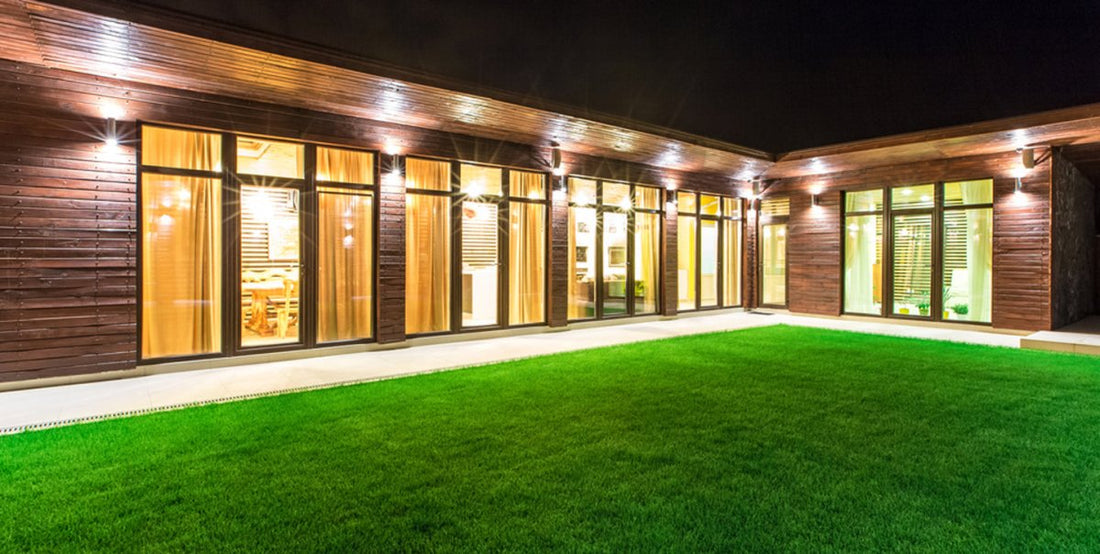LED Wall pack lights, otherwise known as exterior building lights are special kinds of lights designed to be mounted on the outside part of commercial building walls. They are pretty common, hence you will most likely see them in fixture stores.
Wall packs are designed with high-intensity lamp heads that are energy efficient, durable and with a low level of light pollution. Among the benefits of this light is its ability to illuminate specific areas outside the building, hence bringing extra security.
Here are the points you should look while buying LED wall pack lighting:-
Says NO to Watts and look for Lumens
In days gone by, people used to look at the watts to determine the brightness of a light bulb. While watts may have been an important factor in determining the brightness of traditional light bulbs, they no longer are. Watts simply indicate the electricity a LED bulb draws.
Lumens are what you should be looking at if you want to know the brightness of a LED bulb.
Why lumens?
Lumens tell you the total amount of visible light a light source produces. Visible light is the light seen by the human eye. A LED bulb that emits more lumens appears brighter than one that emits fewer lumens.
Lumens are important as they tell you how a LED bulb compares to a conventional bulb. For instance, if you already have metal halide fixture installed on the outer walls of your building and you're looking to replace them with LED, lumens can tell you if the LEDs you're thinking of getting will be as bright as the metal halide – or brighter.
Save Energy with Motion Sensors
While it is very easy to remember to switch on the lights when you are in a dark area, remembering to switch them off is not always easy.
LEDs with a motion sensor feature can significantly reduce the energy consumption of your building. While LEDs alone can lower energy consumption by up to 75%, when they are paired with motion sensors, energy usage can go down by up to 90%.
Motion sensors turn on lights if they detect any motion close by and switch off the lights if some minutes go by with no activity. Building owners and managers usually install LEDs with motion sensors in outdoor areas that don't have to be lit all the time.

Some LED manufacturers install motion sensors during the manufacturing process, which means you won't have to go through the hassle of installing the sensors after buying LED lights.
Look for Photocell sensors
Photocells function as light sensors. Unlike infrared sensors that are good at detecting the presence of objects, photocells are good at detecting light. Photocells are also called photo-resistors because they act like light-sensitive resistors. They have low resistance when in a place with light and high resistance when in a dark place.
The photocells in LEDs signal to the circuit to provide more or less current. The resistance of photocells is usually based on the amount of ambient light hitting their photo-sensitive plates.
This usually dictates the brightness of the light. Photocells are also installed by LED manufacturers so there's no need for additional integration.
Photocells are used in the dusk to dawn fixtures and street lamps and switch the light on at night (when the surrounding environment becomes dark) and switch it off in the morning (when the environment becomes bright again).
By turning light on only when it is needed, they extend the lifetimes of the LEDs, save a lot of electricity, and reduce maintenance costs.
IP Rating for water and dust resistance
The efficiency and longevity of a light fixture mostly depend on where you install it. Some operational conditions, like humidity and water, can be very harsh on light bulbs. This is why you should get bulbs that are specially designed for wet locations.
A wet location is a place where water or other forms of moisture (rain, snow, hail, sleet, fog, or ocean spray) may splash, drip, or flow on the fixtures and damage their electrical components. Typical wet locations in facilities include exterior walls of buildings, walkways, driveways, stairwells, uncovered garages, and uncovered porches.
Lighting fixtures installed in wet locations should have UL Wet Rating so that the electrical components can be protected from water and moisture. If these fixtures are not wet rated and are continuously exposed to water, their life expectancy is decreased and they can also become potential fire hazards.
DLC Listed for Utility Rebates
You may have come across the labels "DLC listed" or "DLC approved" and had no idea what they meant. DLC is DesignLights Consortium, a certification organization for commercial grade lighting products.
Lighting products with DLC certification have a high level of energy efficiency as the organization promotes energy-efficient lighting solutions and collaborates with the government, municipalities, utility companies, and other partners.
If you buy LED exterior fixture that is DLC listed, you may be given rebates by your local utility, which can significantly lower the upfront costs.
Up to you
LED Wall Packs have penetrated the market and its on the rise. Commercial and industrial are rapidly moving towards LED lighting.
What’s your thought about it? Have you moved your lighting to LEDs yet?















































































